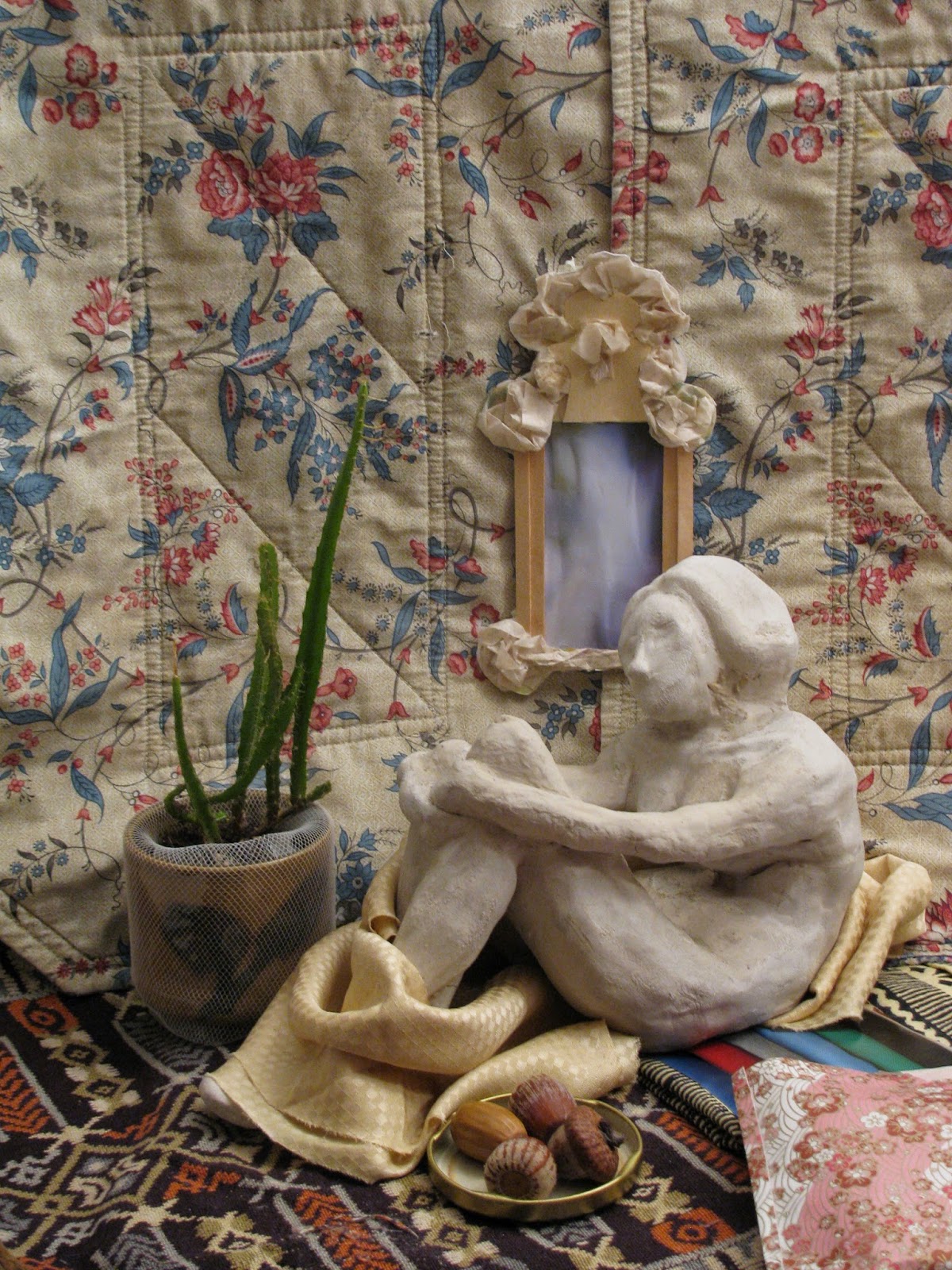After settling in Vancouver in the late 1970s, we spent our first five years getting acquainted with the local mountain trails. On our first hike up and behind Mount Seymour, I took along an exercise from a painting book: "Take a walk with your eyes open for interesting things you see underfoot. Bring them home and make a painting of them."
The "interesting things" I collected are pictured above -- a battered packet that once contained Dutch mini-cigars and a classy metal Whatzit. Although I never made a painting with them, I found both objects so intriguing that they survived even the Great Pre-Move Studio Clear-out of 2012.
Packrats rule! And what more exemplary a packrat than that old rogue Picasso? In her book MATISSE AND PICASSO: A Friendship in Art, his one-time lover Françoise Gilot (known as "the one who got away" because she left him before he could leave her -- but also an interesting artist and woman in her own right -- and evidently still going strong!) describes one memorable reaction to packrat-ism. As I recall her story:--
When they both lived in the south of France, Picasso and Matisse occasionally exchanged edgy visits to check out what the other was doing. One time, when Picasso was deep in his experiments with collage and assemblage, he and Gilot took along their 6-year old son Claude. The little boy was noticeably impressed with the grandfatherly Matisse of white hair and beard and kind manners, as well as with his calm studio, quite different from Picasso's cluttered disorder.
Some weeks later back at home, the precocious Claude went out to collect the mail and came dancing back to his mother, hugging to his chest the latest issue of l'Oeil, the prestigious French art journal. "C'est Monsieur Matisse!" he crowed with delight, displaying the cover photo.
"You like Monsieur Matisse, don't you?" Gilot asked. With great solemnity, Claude replied, "Yes. He is a very great artist."
"Your father is also a very great artist," his mother replied. The little boy looked at her sceptically and answered, "Monsieur Matisse paints beautiful things. Papa paints only junk."
So what does this mean for Picasso's famous statement,“”Every child is an artist. The problem is how to remain an artist once he grows up"?
Nonetheless, I still look underfoot as I walk, and I've brought home many spectacular (or not) finds. My best-ever, from a discard pile at a renovation zone in my old workplace, was a 2-foot high wooden spool of the type that electrical wiring is wrapped on. My last/best boss, who I've referred to before, was leaving ...before me!...and I wanted to present her with a gift reminiscent of her love of tea-with-milk, her hyper-productiveness, and the symbol she'd once given the department: "When we're at our best, it all goes like clockwork."
I saw that the spool would make a perfect tea table, and with collage, paint and ingenuity, I created a minor work of art titled "Tea Time." The core of the spool featured inspirational (!) quotes about capital-T Time, and the base of the spool featured symbols of her family time, forever being balanced with work:--
The *best* part was the top of the spool which combined an intricate clockwork (get it?) with a bird's-eye view of a tea setting: the lid of the golden teapot, a small pitcher of milk, and a mug with the cream-coloured tea that revolted almost everyone else except the boss herself.
For several months this past autumn, the very same kind of spool --only bigger!!! better!!?!? -- sat on a laneway trash pile outside a nearby store. I actually went up close and looked at it once or twice, but my Inner Housekeeper said, "Resist! Resist!" and eventually someone else took it away.
That's okay...because from the same laneway, I'd already picked up half of the metal "cage" from a 16" circular fan. My motive was originally quite practical. After watching a charming grey squirrel with white socks eat its way through a whole line-up of planted crocus bulbs, I resolved to protect the rest of our bulbs with upturned plastic mesh trays of the kind used by garden centres. The fan remnant came along just as I'd run out of garden trays.
When I placed the circular fixture in the garden, next to an old Pepsi tray I'd snagged from work (incorrigible, isn't she?), I couldn't resist adding to it the metal gears JT had once salvaged for me (incorrigible, isn't he?).
If placed in our front yard, this squirrel baffling set-up would have been Indescribably Tacky. Placed in the back yard, where I view it with a smile from the kitchen window, it's Unashamedly Tacky. Picasso, eat your heart out.















